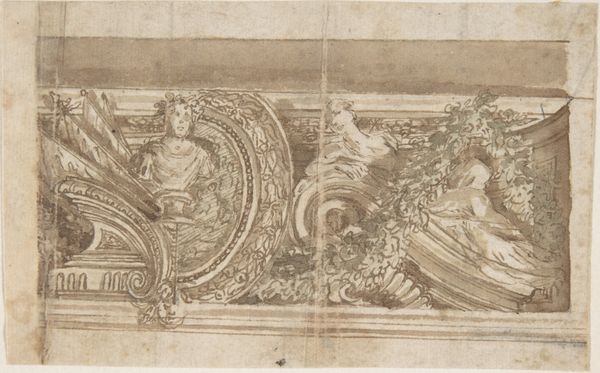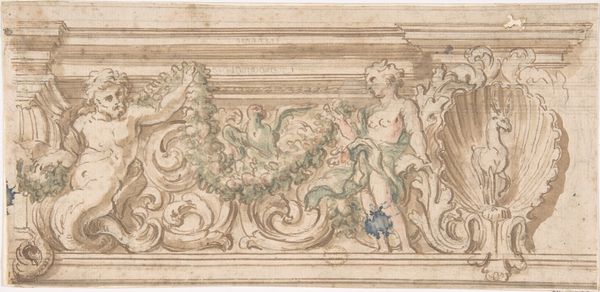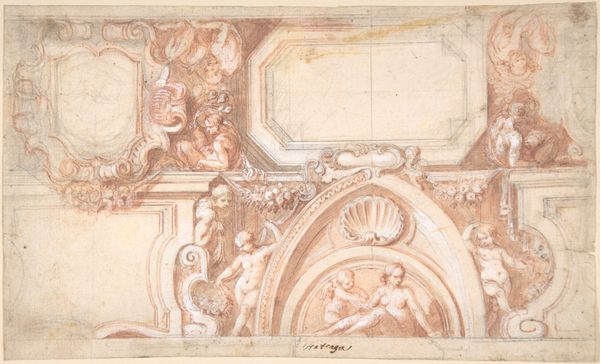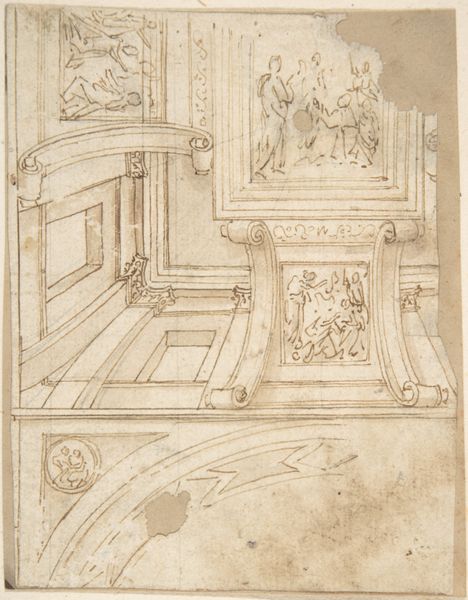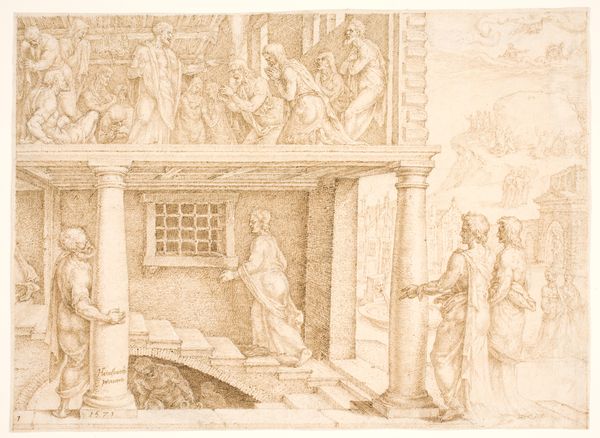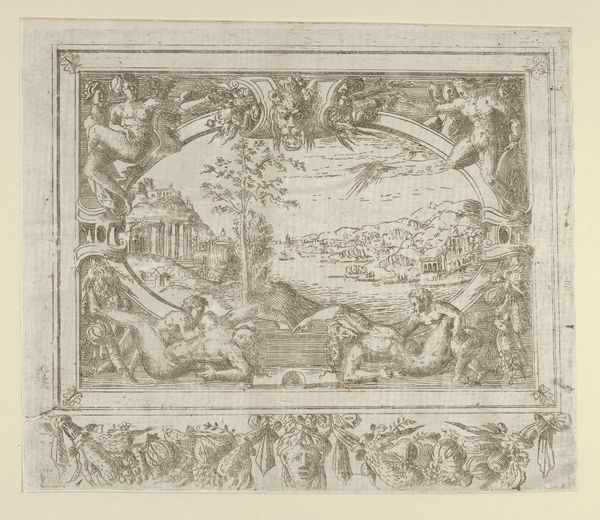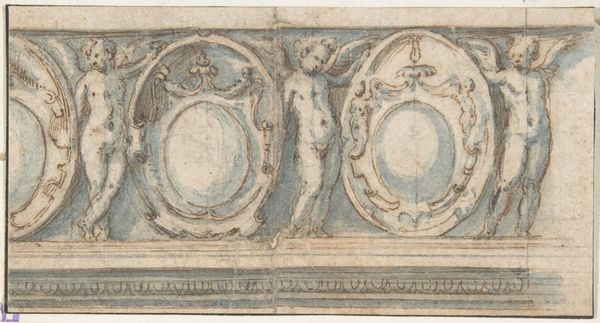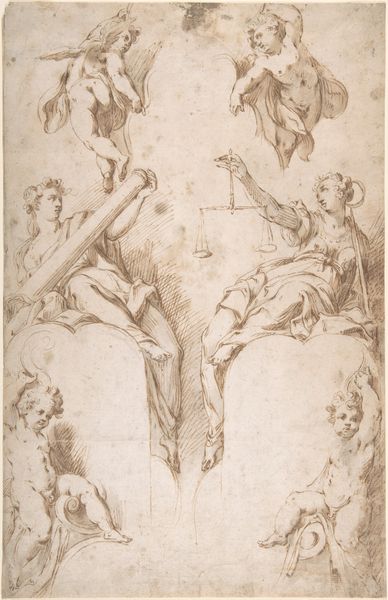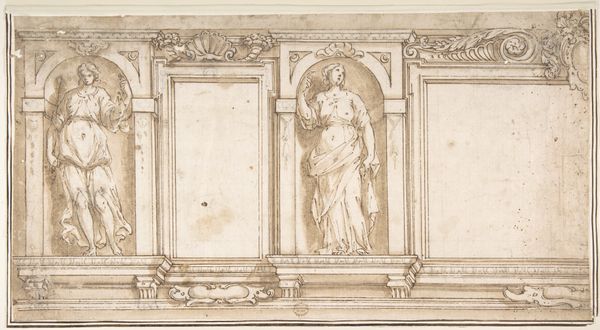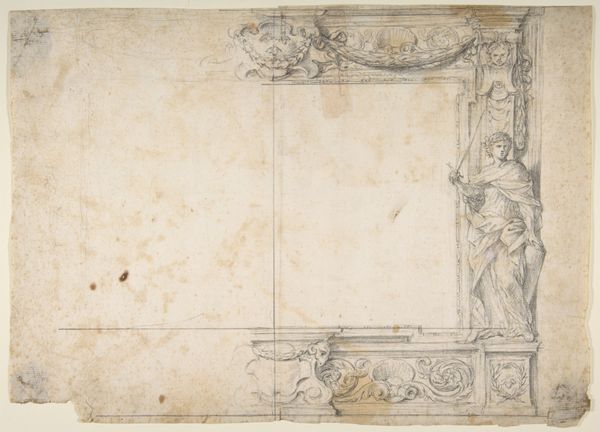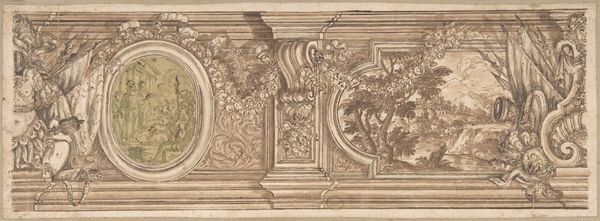
drawing, print, paper, watercolor, ink, chalk
#
drawing
# print
#
landscape
#
figuration
#
paper
#
11_renaissance
#
watercolor
#
ink
#
coloured pencil
#
chalk
#
water
#
history-painting
Dimensions: 145 × 256 mm
Copyright: Public Domain
Curator: Flaminio Allegrini's "Study for a Painted Frieze," dating back to 1625-1627, presents a captivating look at design during the Renaissance. It currently resides here at The Art Institute of Chicago. Editor: My first impression is of a stage set, almost. The way the central landscape is framed makes it feel like a performance is about to begin, maybe a mythological scene? Curator: That’s insightful. Allegrini worked extensively on stage designs and festival decorations for the Barberini family in Rome, so these elements influenced his aesthetic, it involved creating imagery for elites and disseminating a visual culture of power. Editor: Looking closer at the drawing, the layering of ink, chalk, and watercolor suggests the materiality was critical to constructing this elevated and performative reality. The rough sketchiness creates a contrast. Was this intended to be transferred to another medium? Curator: Precisely! As a study, it likely served as a guide for a larger fresco or painted decoration within a palace or villa. These friezes played an essential role in demonstrating wealth and status. The eagle motifs reinforce a link to authority. Editor: It is fascinating to consider the collaborative effort of such an undertaking. The labour of the studio assistants transferring this sketch onto a wall—transforming it to fit specific dimensions with local materials adds another dimension to appreciating the artwork. Curator: The figure on the right seems poised and composed, embodying a classical ideal. The very act of illustrating nobility—with the specific symbolic choices that underpinned that imagery—reveals Allegrini’s astute awareness of his role in constructing these ideals. Editor: Definitely. The contrast between the rather idyllic landscape section and the staged, classical figure hints at the labour required to build and maintain those systems of power, even if subtly, like the material realities underlying a veneer. Curator: The setting allowed elites to see themselves mirrored. "Study for a Painted Frieze" reveals much about the socio-political purposes behind artistic representation in that period. Editor: The processes of artmaking often hold so many stories themselves; by examining materiality and labor, the very human side to these creations. Curator: Yes. Examining the artist in his time helps provide social, cultural and historical context to what we are experiencing in front of the painting.
Comments
No comments
Be the first to comment and join the conversation on the ultimate creative platform.
